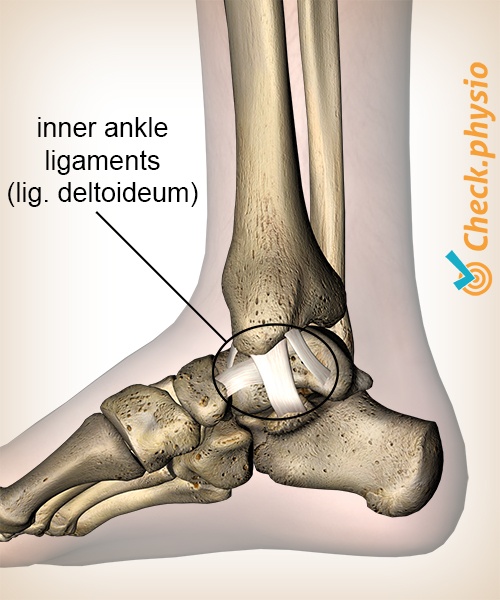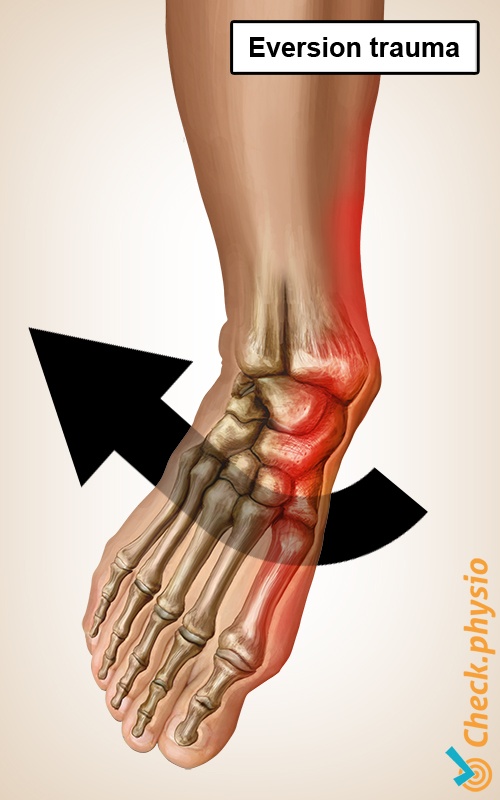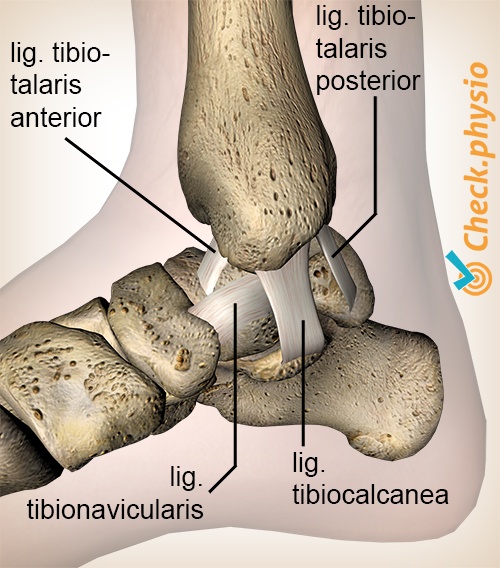- Conditions
- Medial ankle ligament injury
Medial ankle ligament injury Eversion trauma of the ankle / medial ankle injury
Introduction
The medial ankle ligaments are sturdy structures on the inside of the ankle joint. They prevent the foot from rotating too far outward in relation to the lower leg. Torn medial ankle ligaments result in pain and instability on the inside of the ankle joint.
Injury to the medial ankle ligaments is fairly rare. Usually, the lateral ankle ligaments are the ones that tear when we sprain an ankle.

Description of condition
The medial ankle ligaments form part of the "deltoid ligament". This is a very sturdy ligament structures made up of 4 components. These ligaments are overstretched when the foot is rotated too far outward (eversion). If the force with which this takes place is too great, the ankle ligaments will be damaged. In severe cases the ligaments may rupture. In most cases only a few fibers or parts of the deltoid ligament will be damaged.
Cause and history
The classic way in which the medial ankle ligaments are damaged is the "eversion trauma". This means that an accident or fall causes the foot to rotate outward under excessive force. For example, when someone missteps or when an external force acts on the ankle to sprain it, as can happen in contact sports such as soccer.
Long-term overloading of the medial ankle ligaments can also cause pain. If the ankle ligaments are stretched repeatedly during sports, this may eventually cause symptoms. Examples include sports that involve repetitive short and quick changes of direction such as football, basketball and volleyball.
Signs & symptoms
- Pain on the inside of the ankle.
- The passive outward rotation of the foot (eversion) stretches the damaged ankle ligaments and causes pain.
- Pressure on the medial ankle ligaments is painful.
- Feeling of instability (for example when walking downhill, walking downstairs or walking on uneven surfaces).
- The ankle may be swollen and bruised (internal bleeding).
Diagnosis
The diagnosis is made based on an interview and a physical examination. When diagnosing within 0 to 5 days, the function score is used. Its outcome determines the treatment process.
If it is not possible to take four steps on the affected ankle, or if there is tenderness in certain areas, a fracture of the ankle, may be present. An X-ray should then be taken.
Treatment and recovery
Treatment depends on the severity of the injury. Physiotherapy is aimed at improving the stability of the ankle by creating optimum recovery conditions for the ankle ligaments and training the muscles to take over some of the stability. Surgical reconstruction may be considered if the ankle ligaments have ruptured completely.
Treatment may take up to 3 to 6 weeks if no complications arise. In more severe cases, the recovery may take several months or even more than a year.
Exercises
Take a look here at the online exercise program with exercises for medial ankle ligament injuries.
More info
You can check your symptoms using the online physiotherapy check or make an appointment with a physiotherapy practice in your locality.
References
Nugteren, K. van & Winkel, D. (2009) Onderzoek en behandeling van de voet Houten: Bohn Stafleu van Loghum.
Hintermann, B. (2003) Medial ankle instability Foot Ankle Clin N Am. 2003;8:723-738.


